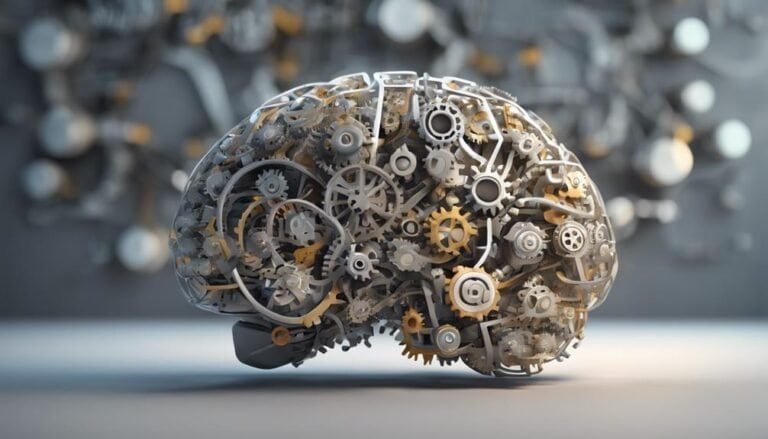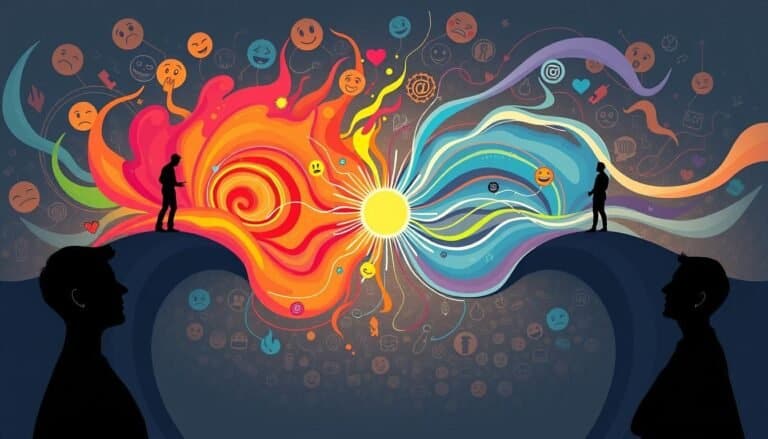Understanding The Availability Heuristic Bias
Have you ever thought about why we often think risks are bigger than they are because of news stories or personal experiences? This strange effect is tied to the availability heuristic, a bias in how we think. It makes us rely on what’s easy to remember, leading to wrong ideas about the world. It’s key to know about this bias because it affects our choices and how we see things, from everyday decisions to big professional ones.
Learning about the availability heuristic helps us see its effects in different areas. It’s important for making better choices and understanding what’s really going on.
Key Takeaways
- The availability heuristic influences how we perceive risks and make judgments.
- Vivid events disproportionately affect our decision-making processes.
- Awareness of this cognitive bias is often not enough to mitigate its effects.
- Online advertising can exploit the availability heuristic to influence consumer behavior.
- Machine learning is susceptible to biases introduced by the availability heuristic.
- Excessive media coverage can lead to distorted perceptions of risk.
- Using statistical data can help counteract the misleading effects of the availability heuristic.
What is the Availability Heuristic?
The Availability Heuristic is a way our brains make quick decisions. It uses examples that come easily to mind. People often pick recent events or easy-to-remember info over a full analysis.
Definition of the Availability Heuristic
This idea says we lean on what’s easy to remember. For example, big cities like New York or Berlin might seem bigger because they’re in the news a lot. This makes us think we know more than we really do. It shows how quick thinking can lead to wrong beliefs.
How It Works in Decision-Making
When deciding, we often pick what’s easy to think of. Studies show we might worry too much about rare events like plane crashes and not enough about common risks like asthma. We might also think there are more words starting with “r” than those with “r” as their third letter, just because they’re easier to remember.
This idea affects not just our personal choices but also work decisions. For example, in the workplace, recent mistakes might get more attention than a person’s overall skills. By focusing on what’s fresh in our minds, we might miss what’s truly important. Knowing about the Availability Heuristic can help us make better choices.
| Cognitive Bias Examples | Common Misjudgments | Influence of Availability Heuristic |
|---|---|---|
| Overestimating airplane crash risks | Believing flying is more dangerous than driving | Driven by media coverage of plane accidents |
| Underestimating asthma deaths | Ignoring serious health risks | Less media attention compared to dramatic events |
| Judging word frequency incorrectly | Assuming “r” at start is more common | Immediate recall of familiar examples shaping perception |
Historical Background of the Availability Heuristic
The availability heuristic is a key idea in behavioral economics and psychology. It shows how people make decisions by using examples that come easily to mind. This idea came from looking at how our minds make decisions, sometimes leading to wrong judgments.
Foundations in Behavioral Economics
Behavioral economics changed how we see economic choices, showing that our choices are often influenced by our minds. People don’t always look at all the data. Instead, they use what they remember or what’s easy to find. This can make them see risks and uncertainty differently.
Contributions of Kahneman and Tversky
Daniel Kahneman and Amos Tversky were leaders in this field. They showed how our thinking and judgment can be affected by biases. Their work on heuristics showed how people can misjudge risks and outcomes. For example, they found people think lottery wins are more likely than they actually are, despite the odds being very low.
Kahneman and Tversky’s research showed that people often judge risk based on vivid or emotional examples. This can lead to big mistakes. They gave examples where people thought shark attacks were more likely than being hit by lightning, even though the latter is much more common. These biases question the idea of rational thinking in economic choices.
| Scenario | Risk Probability |
|---|---|
| Winning Powerball Jackpot | 1 in 300 million |
| Car Crash vs. Air Travel | Driving is 65 times riskier |
| Shark Attack | 1 in 3.7 million |
| Lightning Strike | 47 times more likely than a shark attack |
| Cancer Research Funding | Fraction of defense budget |
| Natural Disaster Insurance | Rates spike, then decline |
This study helped us understand biases in decision-making. It still shapes how we think about these biases today. It shows why knowing about our biases is so important.
How the Availability Heuristic Affects Our Judgment
The availability heuristic changes how we see risks and make choices, often leading to big judgment errors. This bias looks at recent or memorable events, changing our view of probabilities and risks. So, people often think things are more likely if they’ve seen them in the news lately.
Impact on Risk Assessment
When assessing risks, people often put too much weight on what they easily remember. For instance, seeing a lot of shark attacks in the news can make us think sharks are much more dangerous than they really are. And hearing about big stock market gains might make investors think making money is easy. This shows how biases can mess up how we see risks.
| Event | Observed Risk | Media Coverage Influence |
|---|---|---|
| Shark Attacks | Rarity | High |
| Stock Market Success | Variable | Frequent Reports |
| Dot-Com Bubble | Overconfidence | Excessive Hype |
Examples of Misjudgments
The availability heuristic also leads to judgment errors in many situations. The recency effect makes people focus too much on recent data when making decisions. And the primacy effect can make us judge things based on how they first impressed us. For example, a bad performance recently might influence who gets promoted, even if they’re really good overall.
Companies might pick vendors based on their latest experiences, not their track record. This means recent bad experiences can lead to poor choices. Such mistakes can hold back growth and hurt performance.
The Availability Heuristic in Everyday Life
The availability heuristic greatly affects how we make decisions every day. It makes us judge risks and make choices based on what’s easy to remember. This can be swayed by emotions or sensational news. In real life, this leads to wrong perceptions and bad decisions.
Real-World Scenarios
Think about how recent events change our thoughts. People might think natural disasters are more likely after seeing a lot of news about them. Even though the facts say otherwise, the vivid stories and emotions make us worry too much. Here are some examples:
- Judges might pick dramatic acts in talent shows because they remember them better, not just the talent.
- People might think they do more at home than their partner, even if it’s not true.
- After hearing scary news about rare health issues, people might worry more about their health, even if it’s not common.
Media Influence on Perception
The media greatly shapes what we think is real. Sensational news can make people fear or misunderstand certain groups or cultures. Companies also use a lot of money on ads to make us think more about their products. This fits with the availability heuristic, helping them change what we think.
Studies show we trust information that comes easily to mind more than detailed facts. For example, recent wins are often valued more in reviews than past successes. This shows how our memory affects our decisions. It’s important to think critically and not just rely on what’s easy to remember.
| Scenario | Influence of Availability Heuristic | Resulting Perception |
|---|---|---|
| Natural disasters reported in the news | Overestimation of occurrence | Increased fear and anxiety |
| Talent shows prioritizing dramatic acts | Favoring memorability over talent | Skewed evaluations of skill |
| Sensational health condition stories | Exaggerated fear of illness | Misguided health concerns |
| Personal contributions in household work | Weight on personal memory | Distorted perception of equality |
The Availability Heuristic and Cognitive Bias
Cognitive biases greatly affect how we make judgments and decisions. The availability heuristic is one such bias that makes us rely on quick mental shortcuts. It leads us to judge based on what’s easy to remember, not a deep analysis. This bias impacts decisions in many areas.
Understanding Cognitive Biases
The availability heuristic is a key bias that can lead to poor decisions. Studies show that vivid or memorable events make us think they’re more likely to happen. For example, second-year medical interns were more prone to errors due to this bias than first-year students.
This bias isn’t just in medicine. Our views on risks, like flying, are often swayed by emotional memories. Even though flying is incredibly safe, with a risk of fatal incidents almost zero, many still fear it because of scary stories about plane crashes. This shows how biases can mislead us in big ways.
Companies use the availability heuristic in marketing too. They make their products easy to remember when people are shopping. Using dramatic images and stories, like lottery winners, tricks consumers into thinking winning is more likely than it really is.
To fight these biases, we need to be aware of them. We can improve by looking at different information, planning scenarios, and thinking before we decide. Knowing about these biases helps us make better, more rational choices.
The Impact of the Availability Heuristic on Decision-Making
The availability heuristic greatly affects how we make decisions. It makes us choose based on what’s easy to remember, not a deep look at all the facts. This can lead to both good and bad outcomes, especially when we use recent or emotional events to guide our choices.
Fast Decisions vs. Accurate Decisions
When we need to make quick choices, the availability heuristic can help. It lets us act fast. But, this quick thinking might not always be right.
For example, managers might judge performance by recent events, missing the bigger picture. They might take more risks in projects because recent failures are what they remember most. This can make them underestimate the challenges ahead.
Limitations and Risks
The availability heuristic has big downsides. We often think rare events like shark attacks are more common because they’re in the news a lot. At the same time, we might not realize how common things like car accidents really are.
This wrong view can affect big decisions, like investing in technology or choosing leaders. Relying too much on vivid but wrong examples can lead to poor choices.
Knowing about these risks is key. Improving our critical thinking and understanding statistics helps us fight the biases of the availability heuristic. By looking at a variety of information and making smart strategies, we can make better decisions and lessen the heuristic’s effect on our choices.
| Aspect | Fast Decisions | Accurate Decisions |
|---|---|---|
| Speed | High | Lower |
| Cognitive Bias Influence | Prominent | Reduced |
| Example | Relying on recent events | Thorough analysis of data |
| Risk Assessment | Overestimation of rare events | Balanced evaluation of common risks |
How to Counteract the Availability Heuristic
Understanding the impact of the availability heuristic is key to making smart choices. People often lean on vivid memories and quick examples, which can skew their judgment. By using smart decision-making strategies, you can better handle this bias.
Strategies for Better Decision-Making
One good way is to take time to gather all the facts before jumping to conclusions. Using statistics in your decisions helps fight the availability heuristic. By choosing accuracy over quick decisions, you improve your decision-making skills. Here are some strategies to keep in mind:
- Collecting a variety of data from multiple sources to get a full view.
- Analyzing risks and probabilities with a focus on solid evidence.
- Engaging in discussions to get different viewpoints and experiences.
- Using decision-making frameworks that focus on logic over feelings.
Importance of Seeking Diverse Information
Looking for diverse information is crucial to beat cognitive bias. Seeing a wide range of evidence helps broaden understanding and fight off the availability heuristic. For instance, considering various risk factors, like the difference between car accidents and shark attacks, helps clear up confusion. This way, you make more informed choices, leading to better results.
Applications of the Availability Heuristic in Different Fields
The availability heuristic plays a big role in decision-making in healthcare and insurance. It affects how professionals make choices in these areas. Knowing about this bias can make their decisions better.
Healthcare and Medical Diagnoses
In healthcare, the availability heuristic can cause wrong diagnoses. Doctors might think certain conditions are more likely because of recent cases they remember. This can lead to wrong diagnoses and harm patients.
For example, a doctor might think a stroke is more common than other diseases because of a recent case they recall. This can lead to bad decisions.
Insurance and Risk Management
Insurance companies face challenges from the availability heuristic too. People often buy more insurance after big events, like natural disasters. This is because they remember these events more than others.
Companies can fight this bias by using facts and data. This helps them make better decisions about insurance coverage.
| Field | Cognitive Bias | Impact |
|---|---|---|
| Healthcare | Availability Heuristic | Risk of misdiagnosis; relying on memorable cases |
| Insurance | Availability Heuristic | Over-purchasing policies after high-profile disasters |
| Risk Management | Risk Perception Bias | Inaccurate risk assessments based on recent events |
Using facts and data can help reduce the bad effects of cognitive biases. This is true for healthcare and insurance. It leads to better decisions and risk management.
Conclusion
Understanding the availability heuristic is key to making better decisions. This bias makes us rely on what we easily remember and vivid examples. It can change how we judge things. Researchers like Daniel Kahneman and Amos Tversky explain it as a quick mental shortcut.
This shortcut makes us judge things by how often we think about them, not by their true frequency. This leads to wrong judgments, especially when mixed with stereotypes. It’s important to know how this bias works in our daily choices.
It affects both our personal and work decisions. In today’s world, where media and technology focus on extreme events, this bias can make our views skewed. To fight this, we need to use critical thinking, digital coaching, and be aware of our own biases.
By understanding and fighting the availability heuristic, we can make better choices. This awareness helps us see the world more clearly. It improves our personal and work lives by making our decisions more accurate.







